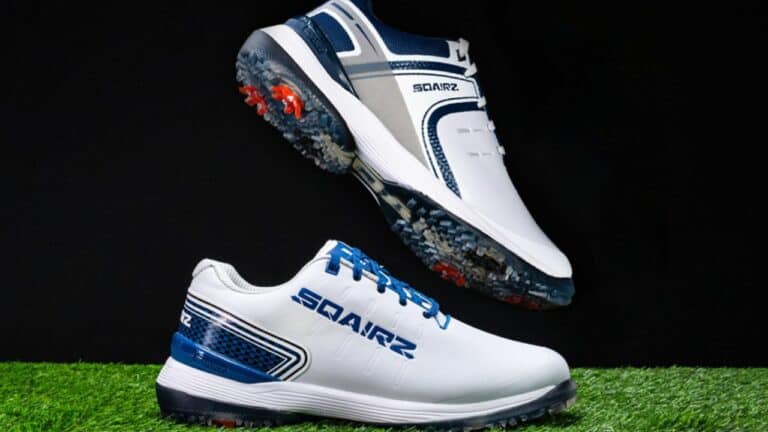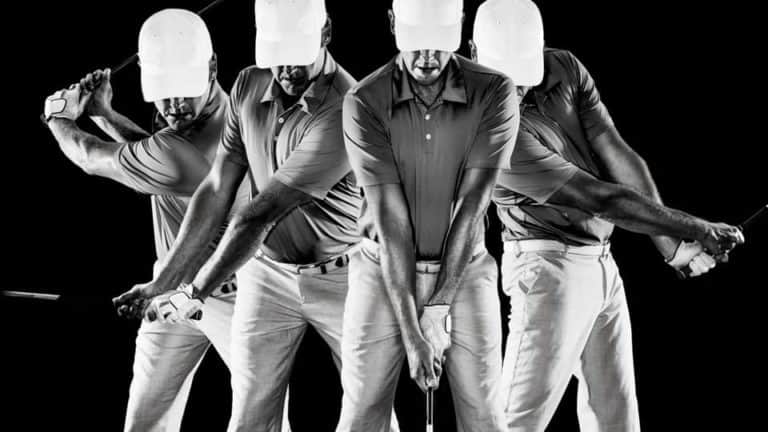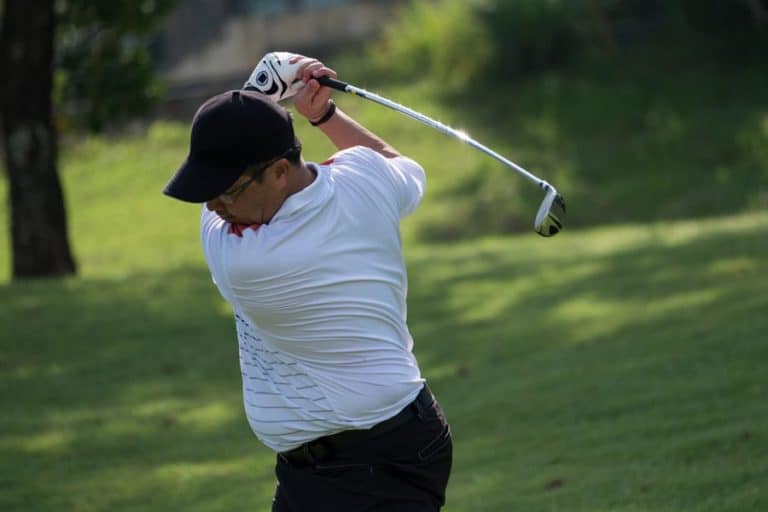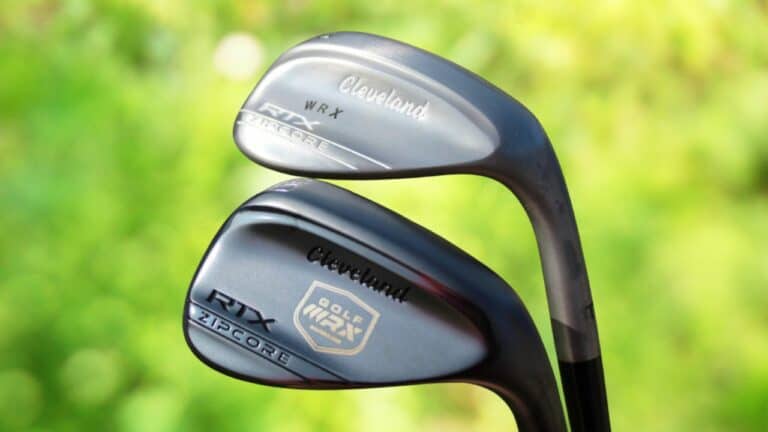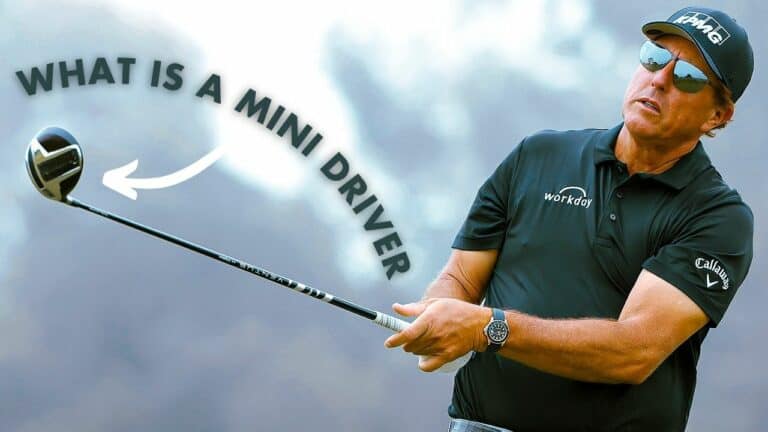Golf Club Distances By Age, Gender, And Skill Level

Distance is the determining factor in golf for how far the player can hit the ball. It depends on many factors, such as age, gender and skill level. The yardage charts below will help give you a better understanding of your swing and how far you can hit each type of club.
The average distance golfers hit varies widely because the clubs are differentiated based on quality, weighting, loft, and club factors that are considered while they are manufactured.
Moreover, various types of clubs are available on the market, but the main motive behind using them is to help you swing the clubhead faster through the air and hit the ball further to make more accurate shots.
To add distance to your drives, investing in a set of distance clubs is a good idea. But for that, first, you need to know the average length of golf clubs and the golf club distances chart based on age, skill, and gender.
Golf club distance chart: key factors to consider
As we mentioned earlier, the total distance a golf club achieved is based on several factors, such as club loft, swing speed, carrying distance, and a lot more. Let’s find out in detail the factors that affect the golf club distance chart:
Swing Speed
According to USGA, the average clubhead speed for all male participants was 110 MPH, with a maximum of 125 MPH. But the average distance for all male participants, as reported by TrackMan, was 280 yards, and the maximum average distance was 330 yards (20% trimmed means were 281 and 332 yards, respectively).
But how does the swing speed affect the distance of clubs? Well, in terms of swing speed, for every extra mph of clubhead speed, the average distance achieved increases by about 2.2 yards.
So, the quality of the strike and the correct technique is one of the biggest differentiating factors. Example: A pro golfer swinging at the same speed as an amateur still ends up getting wildly different distance numbers.
Average swing speed by age chart
| Age | Men | Women |
| 10-16 years old | 93 mph | 83 mph |
| 17-25 years old | 113 mph | 93 mph |
| 26-40 years old | 108 mph | 90 mph |
| 41-50 years old | 103 mph | 88 mph |
| 51-60 years old | 98 mph | 73 mph |
| 60+ years old | 90 mph | 70 mph |
Average swing chart by each club
| Club | 60 mph | 70 mph | 80 mph | 90 mph | 100 mph | 110 mph | 120 mph | 130 mph | 140 mph | 150 mph |
| Driver (Total) | 155 | 181 | 206 | 232 | 258 | 284 | 310 | 335 | 361 | 385 |
| Driver (Carry) | 146 | 170 | 195 | 219 | 243 | 268 | 292 | 316 | 340 | 365 |
| 3 Wood | 130 | 150 | 175 | 195 | 215 | 238 | 259 | 283 | 303 | 318 |
| 5 Wood | 125 | 145 | 165 | 185 | 205 | 225 | 245 | 265 | 285 | 305 |
| Hybrid | 120 | 140 | 160 | 180 | 200 | 220 | 240 | 260 | 280 | 300 |
| 2 Iron | 118 | 135 | 155 | 176 | 194 | 213 | 233 | 252 | 271 | 292 |
| 3 Iron | 115 | 130 | 150 | 172 | 188 | 207 | 226 | 245 | 265 | 284 |
| 4 Iron | 110 | 126 | 145 | 165 | 180 | 190 | 208 | 226 | 245 | 264 |
| 5 Iron | 105 | 120 | 138 | 155 | 170 | 185 | 198 | 215 | 228 | 247 |
| 6 Iron | 100 | 115 | 130 | 145 | 165 | 175 | 185 | 195 | 208 | 219 |
| 7 Iron | 95 | 105 | 120 | 135 | 155 | 165 | 175 | 185 | 195 | 210 |
| 8 Iron | 85 | 100 | 115 | 130 | 145 | 155 | 165 | 175 | 190 | 202 |
| 9 Iron | 80 | 90 | 105 | 120 | 130 | 145 | 160 | 175 | 186 | 197 |
| Pitching Wedge | 73 | 85 | 100 | 110 | 120 | 135 | 145 | 156 | 167 | 179 |
Ball Speed
The speed of the ball can be affected by the type of golf ball you use as well as the quality of the strike. You can cover longer distances if the strike is made with the correct technique and proper stance. You can even measure the ball’s speed with the help of launch monitors and simulators.
What is Smash Factor?
The smash factor is the calculation of ball speed divided by the club speed. The number calculated gives a ratio to show how much energy is transferred from the club head to the golf ball at impact.
The low smash factor number represents less energy is transferred, while if its a higher smash factor number, then it means an efficient amount of energy has been transferred from the face to the ball.
For example: If the ball speed is 150 mph with a swing speed of 100 mph, your smash factor is 1.5.
Other factors that also affect the distance
The other smaller contributory factors that can also affect the golf club distances are as follows:
Loft
The loft angle of the golf club affects the distance of the golf ball. The lower the loft, the more distance will be achieved on a drive. For example, a driver has 8-13 degrees of loft and is designed for distance, while a pitching wedge is designed to get airborne with 41-46 degrees of loft.
| Clubs | Average Lofts 2022 |
| Driver | 8° – 13° |
| 3 Wood | 13° – 15° |
| 5 Wood | 20° – 23° |
| 2 Iron | 18° – 20° |
| 3 Iron | 21° – 24° |
| 4 iron | 25° – 28° |
| 5 iron | 28° – 32° |
| 6 iron | 32° – 36° |
| 7 iron | 36° – 40° |
| 8 iron | 40° – 44° |
| 9 iron | 45° – 48° |
| Pitching Wedge | 41° – 46° |
| Gap Wedge | 48° – 52° |
| Sand Wedge | 54° – 56° |
| Lob Wedge | 58° – 60° |
Weight
The weight of a golf club also affects the distance, as it affects your swing speed, potential smash factor, trajectory, and also spin rate. The lighter the club, the more distance can be achieved by reducing drag on the golf ball as it leaves the face of the club.
Club Shaft Length
The length of the golf club shaft affects the golf ball’s trajectory and release of the club through impact. It also affects the distance, as longer shafts can generate more power and speed than shorter shafts.
Average distance for golf clubs by age
| Club | 20 -30 yrs | 30 -40 yrs | 40 – 50 yrs | 50 – 60 yrs | 60 + years | All Golfers |
| Driver | 238 yds | 231 yds | 220 yds | 211 yds | 196 yds | 219 yds |
| Fairway Wood | 220 yds | 214 yds | 204 yds | 196 yds | 182 yds | 203 yds |
| Hybrid | 196 yds | 190 yds | 181 yds | 174 yds | 161 yds | 180 yds |
| 5- Iron | 179 yds | 174 yds | 165 yds | 158 yds | 146 yds | 164 yds |
| 6 -Iron | 169 yds | 165 yds | 156 yds | 149 yds | 138 yds | 155 yds |
| 7- Iron | 160 yds | 155 yds | 146 yds | 139 yds | 128 yds | 145 yds |
| 8 -Iron | 150 yds | 145 yds | 137 yds | 130 yds | 120 yds | 136 yds |
| 9 -Iron | 139 yds | 134 yds | 127 yds | 120 yds | 110 yds | 126 yds |
| Pitching Wedge | 127 yds | 123 yds | 117 yds | 112 yds | 102 yds | 116 yds |
| Sand Wedge | 94 yds | 91 yds | 86 yds | 81 yds | 74 yds | 85 yds |
Environmental Factors (Weather)
The golf club’s distance can also alter from season to season or due to the weather conditions. So, if you are hitting the ball into a strong wind, then it will have a great influence on the distance, a dry golf course will lead to more roll and more distance than the one needed.
Therefore, by understanding the factors that affect golf distance, you can choose the right golf clubs to maximize your performance and reach further shots.
Average golf club distance charts
These charts are mentioned based on gender- that is, men and women and based on tour level. However, knowing the distance they cover can help you get the right ones. Because the average distances differ for both men and women due to their strength, flexibility, length, weight, and shaft of the clubs.
Average Distances for Men –
| Club | Short Hitter | Mid Hitter | Long Hitter |
| Driver | 200 yds | 217 yds | 260 yds |
| 3 Wood | 180 yds | 205 yds | 235 yds |
| 5 Wood | 170 yds | 195 yds | 210 yds |
| 7 Wood | 160 yds | 185 yds | 200 yds |
| 3 Hybrid | 163 yds | 190 yds | 205 yds |
| 3 Iron | 160 yds | 180 yds | 200 yds |
| 4 Iron | 150 yds | 170 yds | 180 yds |
| 5 Iron | 140 yds | 160 yds | 170 yds |
| 6 Iron | 130 yds | 150 yds | 160 yds |
| 7 Iron | 120 yds | 140 yds | 150 yds |
| 8 Iron | 110 yds | 130 yds | 140 yds |
| 9 Iron | 95 yds | 115 yds | 130 yds |
| Pitching Wedge | 80 yds | 105 yds | 120 yds |
| Sand Wedge | 60 yds | 80 yds | 100 yds |
| Lob Wedge | 50 yds | 70 yds | 90 yds |
Average Distances for Women –
| Club | Short Hitter | Mid Hitter | Long Hitter |
| Driver | 150 yds | 175 yds | 200 yds |
| 3 Wood | 125 yds | 150 yds | 180 yds |
| 5 Wood | 115 yds | 135 yds | 170 yds |
| 3 Hybrid | 105 yds | 130 yds | 165 yds |
| 3 Iron | 100 yds | 125 yds | 160 yds |
| 4 Iron | 90 yds | 120 yds | 150 yds |
| 5 Iron | 80 yds | 110 yds | 140 yds |
| 6 Iron | 70 yds | 100 yds | 130 yds |
| 7 Iron | 65 yds | 90 yds | 120 yds |
| 8 Iron | 60 yds | 80 yds | 110 yds |
| 9 Iron | 55 yds | 70 yds | 95 yds |
| Pitching Wedge | 50 yds | 60 yds | 80 yds |
| Sand Wedge | 40 yds | 50 yds | 60 yds |
| Lob Wedge | 35 yds | 45 yds | 50 yds |
Average Distances for LPGA Tour Players
| Club | Average Distance |
| Driver | 240 – 280 yds |
| 3 Wood | 195 – 217 yds |
| 5 Wood | 185 – 205 yds |
| 7 Wood | 174 – 195 yds |
| 4 Iron | 170 – 181 yds |
| 5 Iron | 161 – 173 yds |
| 6 Iron | 152 – 163 yds |
| 7 Iron | 141 – 154 yds |
| 8 Iron | 130 – 143 yds |
| 9 Iron | 119 – 132 yds |
| Pitching Wedge | 107 – 121 yds |
Average Distances for PGA Tour Players
| Club | Average Distance |
| Driver | 285 – 321 yds (Tour Average: 299.8 yds) |
| 3 Wood | 243 – 304 yds |
| 5 Wood | 230 – 288 yds |
| 3 Iron | 212 – 265 yds |
| 4 Iron | 203 – 254 yds |
| 5 Iron | 194 – 243 yds |
| 6 Iron | 183 – 229 yds |
| 7 Iron | 172 – 215 yds |
| 8 Iron | 160 – 200 yds |
| 9 Iron | 148 – 185 yds |
| Pitching Wedge | 136 – 170 yds |
Average Distances for Senior Tour Players
| Club | Average Distance |
| Driver | 260 – 310 yds (Tour Average: 281 yds) |
| 3 Wood | 230 – 239 yds |
| 5 Wood | 218 – 226 yds |
| 3 Iron | 201 – 208 yds |
| 4 Iron | 192 – 199 yds |
| 5 Iron | 184 – 191 yds |
| 6 Iron | 173 – 180 yds |
| 7 Iron | 163 – 169 yds |
| 8 Iron | 151 – 157 yds |
| 9 Iron | 140 – 145 yds |
| Pitching Wedge | 129 – 134 yds |
Tips on improving golf club distances
Here are some of the tips you need to keep in mind to increase your golf club speed and distance.
1. Improve your swing speed: If you have a faster swing can hit the ball farther, so you need to focus on improving your swing speed to hit longer drives.
2. Get fitted for golf clubs: You can get custom-fitted for golf equipment, as the right club can help you get more accurate shots.
3. Choose the right golf ball: You need to choose golf balls that are designed on the basis of swing speed and spin rate.
4. Use the right grip: You should always ensure that the club grip is comfortable and effective to maximize your swing speed and distance.
5. Practice: If you practice frequently, you have scope to improve your technique and accuracy, as well as better understand their golf clubs’ performance.
Conclusion
Overall, Golf Distance clubs are crucial for golfers in order to maximize their performance. Because with the right Golf Distance Clubs, ball speed, and smash factor, golfers can reach their full potential and compete with the best.
You can also refer to the distance clubs charts you can reach golfing heights you never thought possible. Moreover, if you familiarise yourself with Golf distance clubs, then you are all set to unlock your true golf potential.



